|
|
| |
|
|
| |
|
|
| Fun Easy English Classroom June 10 |
|
| |
Classroom
Today
Learn about
regular verbs |
|

Today in the classroom you are going to learn about
regular verbs an important part of English grammar. |
 Hey
if you cannot understand something on this page, Hey
if you cannot understand something on this page,
then use the Fun Easy English
dictionary
(opens in a new window) |
|
|
|
Grammar:
Regular
Verbs
Definition of a regular verb. |
- A regular verb:
- also known as a weak verb
- takes "ed", "d", or "t" to form the
simple past and past participle
- When a regular verb ends in "y", change the "y" to "i" (in
many cases you should also double the end
consonant before adding "ed")
- The past participle of a regular verb is usually identical
to the past form, while the past participle of an
irregular verb is often different
|
|
Regular
Verb Examples |
- She talked the entire night.
- They walked around the park.
- The following words are regular
verbs
- regular verb base form -
simple past - past participle
- talk -
talked -
talked
- walk -
walked -
walked
|
|
Fun Easy English Grammar Lessons |
|
 From
YOUR Teacher: Regular
Verbs From
YOUR Teacher: Regular
Verbs
This is a pretty easy concept in American English
grammar. Usually students learn regular verbs at the
beginning of their English language studies. |
|
|
|
|
|
Additional Lessons |
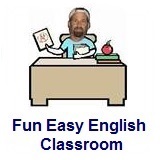 About These
Lessons About These
Lessons
The following classroom lessons are great for students
who want additional conversation, listening, and reading
practice. |
-
Conversation Lesson -
Advanced
Level. Dialogs for everyday use.
Short situational dialogs for students of English as
a Foreign (EFL) or Second (ESL) Language with a
written conversation and a conversation notes
section.
|
 Conversation Lesson
13 - Calling for Help Conversation Lesson
13 - Calling for Help
(Advanced -
Conversation, Reading)
Dialogs for everyday use. Short situational dialogs for
students of English as a Foreign (EFL) or Second (ESL)
Language. |
Calling for Help
PETER: Hey! That car just ran a red light
and hit that truck!
GAIL: Is anyone hurt?
PETER: I don’t know … let’s call 911. …
Hello? I’d like to report a car accident near the post office on Charles Street.
It looks like a man is hurt. Yes, it just happened. OK, thanks. Bye.
GAIL: What did they say?
PETER: They’re going to send an ambulance
and a police car right away.
GAIL: Good, they’re here. I hope the man
is OK.
PETER: I know. You have to be so careful
when you’re driving. |
|
Conversation Notes |
- Hey! This expression is used to show surprise. Notice
how That car just ran a red light and hit that truck! is said with a lot of
energy.
- Is anyone hurt? This is a yes/no question, so the
intonation rises at the end. Notice how this question is asked in a worried
way.
- 911 is the phone number you dial for emergency services.
The person who answers will ask you questions about the emergency situation
and then send out the necessary emergency services, which may include police
officers, firefighters and an ambulance.
- I’d like to report a car accident near the post office
on Charles Street. Notice how the key words “car accident,” “post office”
and “Charles Street” are stressed. These are the important details that the
emergency services need.
- It just happened is a way of saying “It happened a
moment ago.” Notice the stress on “just,” which emphasizes that the accident
happened very, very recently.
- What did they say? Notice how “say” is emphasized, but
the intonation falls at the end of the word. This is a “what” question, so
the intonation falls at the end.
|
|
Source: U.S. State Department |
|
Additional Conversation |
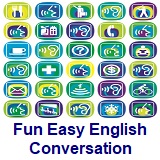 Conversation Conversation
This is a collection of 30 situational conversations
which focus on a wide variety of communicative and
natural encounters in English....these
lessons are for beginning students. |
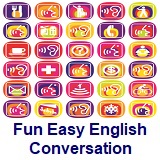 Conversation Conversation
This is a collection of 36 situational conversations
which focus on spoken American English in a relatively
natural way....these
lessons are for intermediate students. |
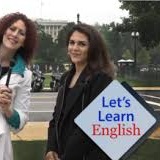 Conversation Conversation
English conversation lessons. 52
lessons covering pronunciation, speaking,
writing, and grammar topics....these
lessons are for beginning students. |
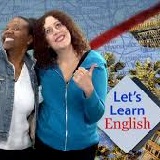 Conversation Conversation
English conversation lessons. 30
lessons focusing mostly on communication and
grammar topics....these
lessons are for intermediate students. |
|
|
|
|
|
|
|
 Hey Students, Hey Students,
Use this dictionary and reference to look up any words you do not
understand in Fun Easy English.
Note: search opens in a new tab. |
|
|
|
|
|
Search Fun Easy English |
|
|
|
|
|
|
|
|
|
|
|
|
|
|
|
About
Contact
Copyright
Resources
Site Map |